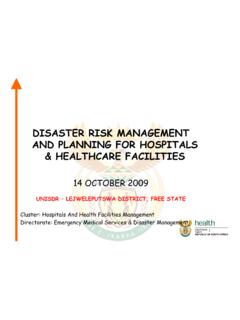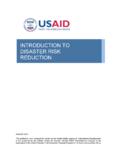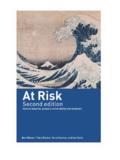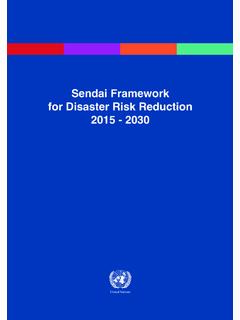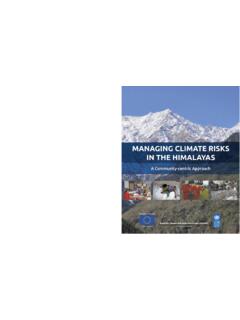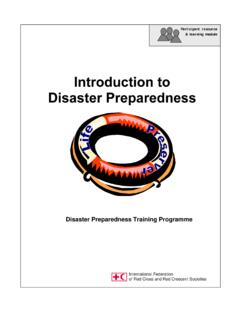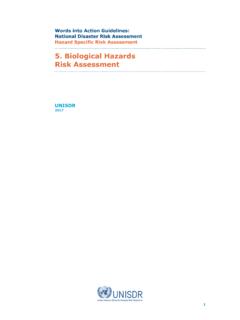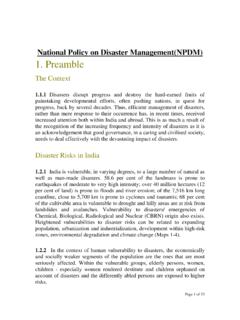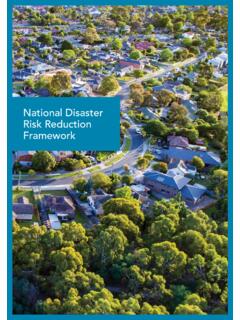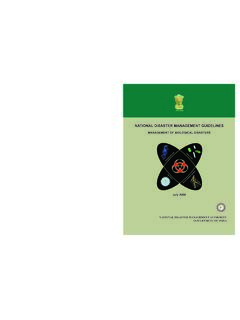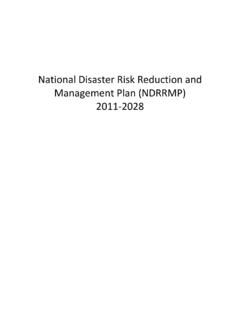Transcription of National Environmental Policy and Strategies
1 National Environmental Policy and Strategies 2 1. The Need for a National Policy on the Environment Sri Lanka s landscape, vegetation and climate, and its people, had once blended to form an island of incredible beauty and serenity, and the country was called Serendip. Much of this has changed over the past few centuries, particularly in the past few decades. It is the people that have brought about these changes. Sri Lanka s population, now reaching 19 million, places the island among the most densely populated countries in the world, and a good proportion of the population live in poverty.
2 These are the most potent underlying factors that have brought about the changes in Sri Lanka s environment, threatening to undermine the nation s natural resource base. The nation s effort to advance its pace of development, while maintaining the essential freedom of the people to make choices, has had adverse impacts on the four primary natural resources, the land, water, atmosphere and living resources, and on the living environment. While recognizing the imperative of socio-economic development in addressing the underlying causes of Environmental degradation, there has been, in recent years, a growing realization that uninhibited development, while it may yield immediate benefits, will undermine the development process by causing irreparable damage to the natural resources that support development.
3 Optimizing development, and therefore maintaining its sustainability, will only be possible by safeguarding the environment through protecting nature and its life support systems. Legal, Policy , and institutional interventions aimed at addressing Environmental issues have been made since the 1980s. National Environmental Action Plans have been in place since 1992, and various measures aimed at controlling Environmental degradation have been adopted in the different sectors.
4 These actions, however, fell far short of what is required for ensuring that the development process remains sustainable and that Environmental integrity is maintained. This underscored the need for a National Policy on the environment; a Policy that will bind all organisations and individuals who use Environmental resources or otherwise have an impact on the resources to exercise due care to avoid Environmental degradation. Such a Policy , in its implementation, will pave the way for sustainable development.
5 This is the basis on which the National Environmental Policy has been formulated. 2. The National Environmental Policy The Constitution of Sri Lanka makes it The duty of every person in Sri Lanka to protect nature and conserve its riches . The National Environmental Policy acknowledges this duty and seeks to provide the direction according to which steps will be taken to conserve and manage Sri Lanka s environment in all its aspects. The National Environmental Policy renews the commitment of government, in partnership with the people, effectively to manage the environment for the benefit of present and future generations.
6 The aim of this Policy is to ensure sound Environmental management within a framework of sustainable development in Sri Lanka. This Policy is supported by many other policies and Strategies developed for other sectors. The National Environmental Policy emphasizes that caring for the environment is the bounden duty of any institution, government or non-government, and of any individual that uses, or otherwise carries out an activity that has an impact on, the resources of the environment.
7 Technical terms used in the text are explained in the Annex. 3 Objectives 1. To promote the sound management of Sri Lanka s environment in its entirety without compromise, balancing the needs for social and economic development and Environmental integrity, to the maximum extent possible while restricting inimical activities. 2. To manage the environment by linking together the activities, interests and perspectives of all groups, including the people, non-government organizations and government at both the central and the local levels.
8 3. To assure Environmental accountability. Principles 1. The guiding principles of Environmental management will be the polluter pays and the need to reduce consumption, and recycle and reuse materials to the maximum extent possible. 2. When living natural resources are used, it will be ensured that such use is wise, sustainable, and consistent with the integrity of ecosystems and evolutionary processes. 3. When non-living resources are used, it will be ensured that such use is consistent with Environmental best-practice, bearing in mind the need to provide also for future generations.
9 4. Traditional knowledge and practices will be respected in the development of Environmental management systems. 5. Effective governance will be ensured through the decentralization of Environmental management services to the maximum possible extent. Statements 1. Resources such as land, water, air, minerals and biodiversity will be managed in a manner consistent with the viability of ecological processes. 2. Environmental management will be through participatory, transparent, predictable and accountable decision-making processes at all levels.
10 3. In addition to protecting the environment from abuse, management systems will take into account the need to restore environments damaged in the past. 4. Environmental management systems will be encouraged to be flexible so as to adapt to changing situations ( climate change, invasive species and living genetically-modified organisms) and adopt the Precautionary Principle. 5. The economic value of Environmental services will be recognized so as to assure the sustainability of such services for the benefit of the people.
